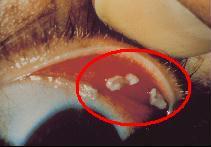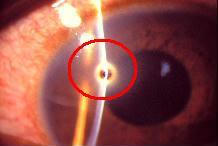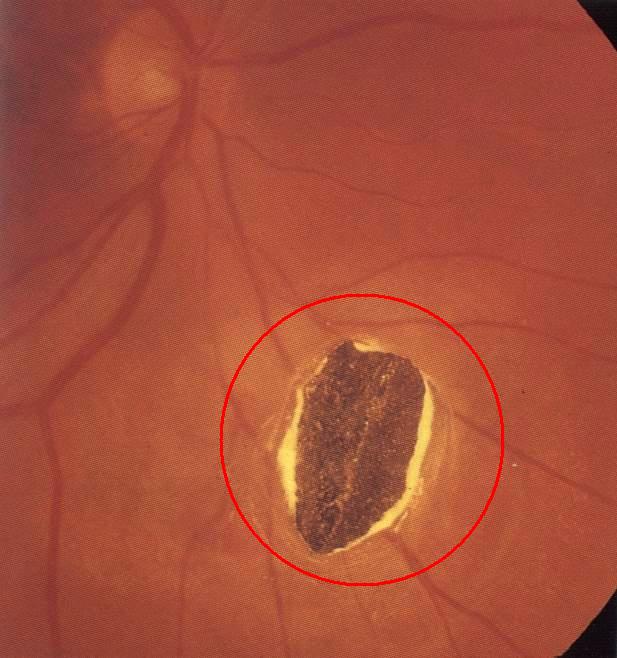Cases of foreign bodies in the eyes are quite commonly seen. In most cases, the foreign bodies are found under the eyelid or on top of the cornea where they can be easily removed. However, foreign body can enter the eyeball through perforating wound following penetrating eye injury. Foreign bodies in the eyeball (intraocular) require surgery for their removal.
1. Foreign body on the surface of the eye

Foreign bodies under the eyelid

Foreign body on the cornea
Examples of activities causing above injuries are:
- Welding
- Grinding
- Working in dusty area (sweeping, dusting house/office)
2. Foreign body in the eyeball (intraocular)

Perforating eye injury with iris prolapsed

Intraocular foreign body (on the retina)
Examples of activities causing intraocular foreign body are:
- Cutting grass with lawn mover
- Hammering nail
- Metal drilling
- Explosion
Signs & symptoms
Foreign body on the cornea or under the eyelid will cause discomfort or irritation and sometime pain. Occasionally, it can cause redness and watery eyes.
On the other hand, penetrating injury with foreign body in the eyeball (intraocular) can cause drop in vision due to development of cataract, vitreous haemorrhage and retinal detachment.
Treatment
Foreign bodies on the eyeball surface which are loosely attached can be easily be removed by general doctor with a cotton bud following instillation of topical anesthesia. Multiple superficial foreign bodies may be easily removed by irrigation.
CAUTION, these cases should be referred to eye doctor:
- Patients with corneal foreign body especially those with rust ring that cannot be completely removed, need to be referred to ophthalmologist within 24 hours.
- Patients who still complain of irritation after irrigation. Foreign body might be stuck under the eyelids.
- Patient with penetrating eye injury
Any patient with suspected intraocular foreign body should be referred immediately. History suggestive of intraocular foreign body include:
- Eye injury that occurs following hammering, grass cutting or explosion.
- Patient with blurring of vision following eye injury.
Foreign body in the eyeball needs special ophthalmic management. Intraocular foreign body can be identified by X-rays, CT scan or ultrasonogram of the eye.
Prevention
Workers who work in an environment where flying debris can get into the eye should always wear protective goggles.
ATTENTION: ENSURE SAFETY, always use PROTECTIVE EYE GOGGLES/SHEILD when doing activities as mention above.
| Last Reviewed | : | 23 August 2019 |
| Writer | : | Dr. Joseph Vijaya Alagaratnam |
| Reviewer | : | Dr. Rosniza bt. Ab. Razak |







